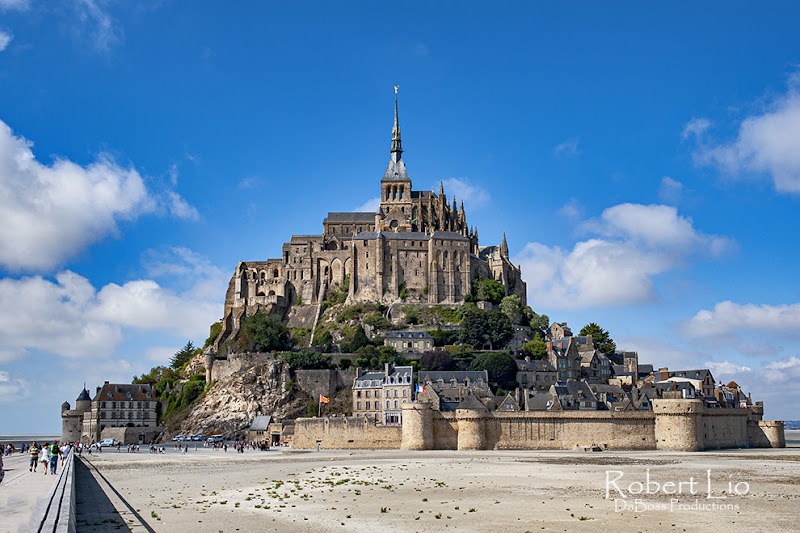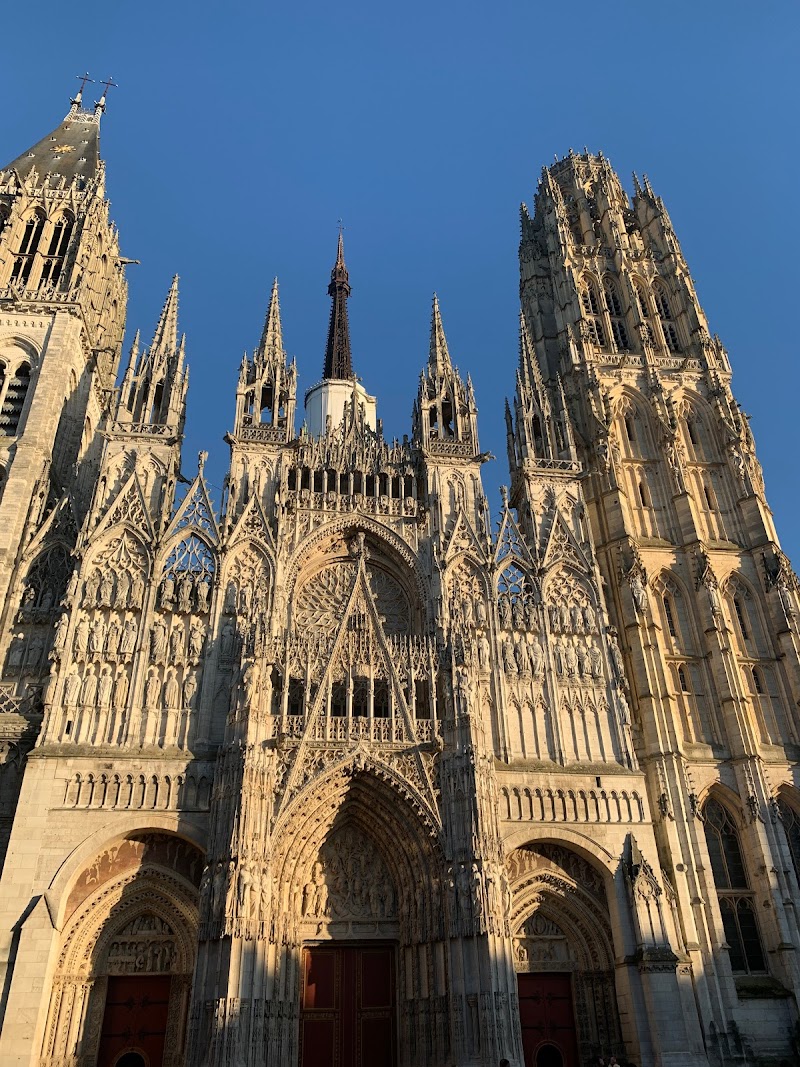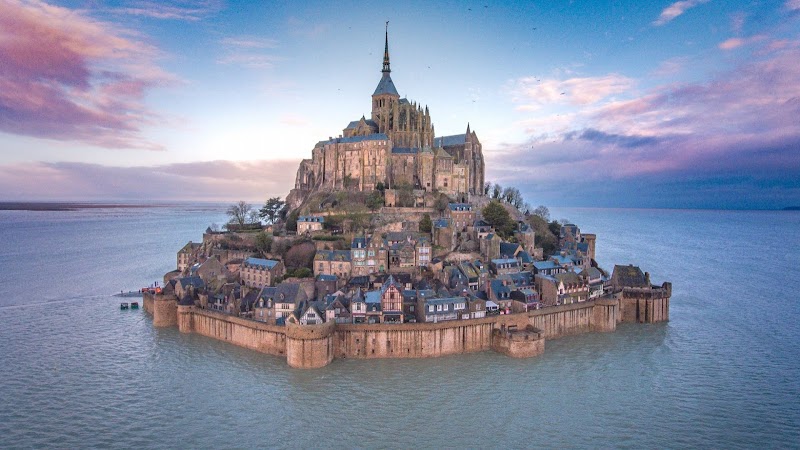Welcome to Normandy
Did you know that Normandy, a region rich in history and natural beauty, extends over an impressive 30,000 square kilometers? This magical land, known for its stunning chalk cliffs, vibrant countryside, and magnificent Gothic cathedrals, offers a plethora of experiences just waiting to be uncovered. Whether it's the iconic Mont Saint-Michel soaring from the sea or the moving D-Day Landing Beaches, Normandy offers a mesmerizing mix of breathtaking landscapes and deep historical narratives.
Planning your trip to this remarkable region could appear challenging, but fear not. Our comprehensive Tourist Map of Dordogne is here to guide you. This essential tool is designed to help you traverse Normandy's vast expanse, ensuring you don't overlook any of its hidden gems. Use it to chart your journey through time and discover the rich tapestry that makes Normandy so uniquely unforgettable.
Booking.comWhat to See and Do in Normandy
Normandy is a treasure trove of history, culture, and natural beauty. Discover the creativity of Giverny, the grandeur of the Château Gaillard, the wild charm of the Cliffs of Étretat, the historical significance of Caen, the vibrant colors of Honfleur's harbor, the stunning architecture of Rouen Cathedral, and the serene atmosphere of the Abbey of Jumièges. For more great travel ideas, check out our Tourist Map of Brittany.
The Artistic Inspiration of Giverny
Immerse yourself in the picturesque village of Giverny, the source of inspiration for the globally acclaimed impressionist painter, Claude Monet. The enchanting water lily pond, the Japanese bridge, and the vibrant color of the flower garden all reflect Monet's vision. Not far from Giverny, you can follow the Seine River as it winds through the verdant landscape, a sight immortalized in many of Monet's paintings.
The Impressive Château Gaillard
Perched high above the winding Seine River, the Château Gaillard in Les Andelys is a testament to medieval military architecture. Built by Richard the Lionheart in the 12th century, the ruins of this once impregnable fortress provide breathtaking views over the surrounding countryside. Within a short drive, you can also explore the historical town of Rouen, where the tourist map of France will direct you to the spot where Joan of Arc met her tragic end.
The Dramatic Cliffs of Étretat
Feel the energizing sea breeze as you stand atop the dramatic Cliffs of Étretat. These natural white chalk towers, protruding into the Channel, form a breathtaking landscape that has inspired artists and writers for centuries. Nearby, the charming coastal town of Honfleur awaits with its vibrant harbor, lined with colorful houses and teeming with life.
The Historical Significance of Caen
Caen, a city steeped in history, invites you on a journey through time. Visit the Men's Abbey and the Women's Abbey, both founded by William the Conqueror, and experience the medieval splendor of the Château de Caen. Furthermore, the city's memorial center provides a sobering yet insightful exploration of the events of World War II and D-Day.
The Vibrant Colors of Honfleur's Harbor
Relax by the harbor in Honfleur, where the reflection of the vibrant houses in the water creates a hypnotic scene. This historic port town, with its narrow cobblestone streets and timber-framed houses, has a unique charm and a rich maritime history. The Sainte-Catherine Church, constructed entirely of wood by shipbuilders, is a must-see.
The Stunning Architecture of Rouen Cathedral
Experience the awe-inspiring grandeur of the Rouen Cathedral, a masterpiece of French Gothic architecture. With its detailed facade, towering spire, and the tomb of Richard the Lionheart, the cathedral is a testament to Rouen's significant historical and cultural heritage. The medieval quarter of Rouen, with its half-timbered houses and narrow streets, enhances the city's old-world charm.
The Serene Atmosphere of the Abbey of Jumièges
Find tranquility at the Abbey of Jumièges, one of the oldest and most significant Benedictine monasteries in Normandy. Its majestic ruins, set in a peaceful park, evoke a sense of timelessness and serenity. Not far from the abbey, the Brotonne Forest provides a refreshing contrast with its lush greenery and diverse wildlife. For more breathtaking landscapes, check out our Tourist Map of the Coast of France.

Practical Information for Visiting Normandy
Transportation and Mobility
Normandy's transportation network is comprehensive, making it easy to explore this historical region. Trains from Paris to Normandy's capital, Rouen, take approximately 1.5 hours. Once in Normandy, local buses and trains connect the region's towns and attractions. For a more flexible itinerary, consider hiring a car, especially for remote areas like the Cotentin Peninsula or the Auge Valley. Bicycles are also a popular choice for exploring the countryside.
Schedules and Prices
Most attractions in Normandy operate from 9 am to 6 pm, with extended hours in the summer months. It's always wise to check official websites for the most up-to-date information. As for the prices, entrance fees for major attractions range from €7 to €15, while local museums and less touristic sites often charge less. Discounts are typically available for students, families, and seniors.
Safety Tips
Normandy is generally a safe destination, but like anywhere, precautions should be taken. Always keep an eye on your belongings, particularly in crowded tourist areas. If you're driving, be aware of narrow and winding country roads, and always respect speed limits. When visiting the cliffs of Étretat or other coastal areas, heed warning signs and stay within designated paths to ensure your safety.
Practical Recommendations
Normandy's weather can be changeable, so pack layers and waterproof clothing. The best times to visit Normandy are late spring through early fall, with July and August being the busiest months. If you prefer fewer tourists, consider visiting in the shoulder seasons of April-May and September-October. It's advisable to book accommodation and car rentals in advance, especially during the peak summer season.
Lastly, don't forget to try some of Normandy's famed cuisine, from creamy Camembert cheese to sea-fresh oysters. Dining hours in Normandy typically follow the French pattern: lunch is served from 12 pm to 2 pm and dinner from 7 pm to 9 pm.

Frequently Asked Questions
1. What are some lesser-known museums in Normandy worth visiting?
Normandy is rich in history and culture, and this is reflected in its numerous museums. While the D-Day museums and the Museum of Fine Arts in Rouen are quite famous, there are a few hidden gems that deserve your attention. The Christian Dior Museum in Granville is a must-visit for fashion enthusiasts, housed in the designer's childhood home. For art lovers, the André Malraux Museum in Le Havre boasts one of the largest collections of Impressionist paintings in France.
2. Can you recommend any unique culinary experiences in Normandy?
Normandy is a food lover's paradise, known for its dairy products, seafood, and cider. To experience the authentic flavors of the region, try a cooking class in a local kitchen or a cheese-making workshop. Visiting a traditional cider house for a tasting session is a must-do for any foodie. You should also try to catch a farmers' market to sample the freshest local produce.
3. Where can I find unique souvenirs in Normandy?
Shopping in Normandy offers a range of unique souvenirs to take home. From local Calvados brandy, Camembert cheese, to traditional Normandy ceramics, there's plenty to choose from. The shops in Honfleur and Bayeux are particularly good for finding local products and artisan items. Do not forget to check out the local antique markets for one-of-a-kind finds.
4. Are there any lesser-known natural wonders in Normandy?
Aside from the famous Cliffs of Étretat, Normandy is home to several beautiful, lesser-known natural sites. The Marais Vernier, a large peat bog, is a haven for birdwatchers. The Vire Valley, with its stunning gorges and forests, is perfect for hiking. And don't miss the Suisse Normande, a region of rolling hills and deep valleys that’s great for outdoor activities.
5. What are some off-the-beaten-path historical sites in Normandy?
Normandy is steeped in history and there are many lesser-known sites worth exploring. The Château de Carrouges is a fascinating mix of architectural styles, while the ancient Prieuré Saint-Gabriel is a tranquil retreat. The medieval town of Domfront, with its ruins and old houses, offers a step back in time.
6. Are there any annual events or festivals in Normandy that I should know about?
Normandy has a lively calendar of events, many of which offer unique cultural experiences. The Bayeux Medieval Festival in July is a spectacular event with parades, food, and music. The D-Day Festival commemorates the historic landings with a series of events in June. And for food lovers, the Apple Festival in Conches-en-Ouche in October celebrates all things apple-related.

